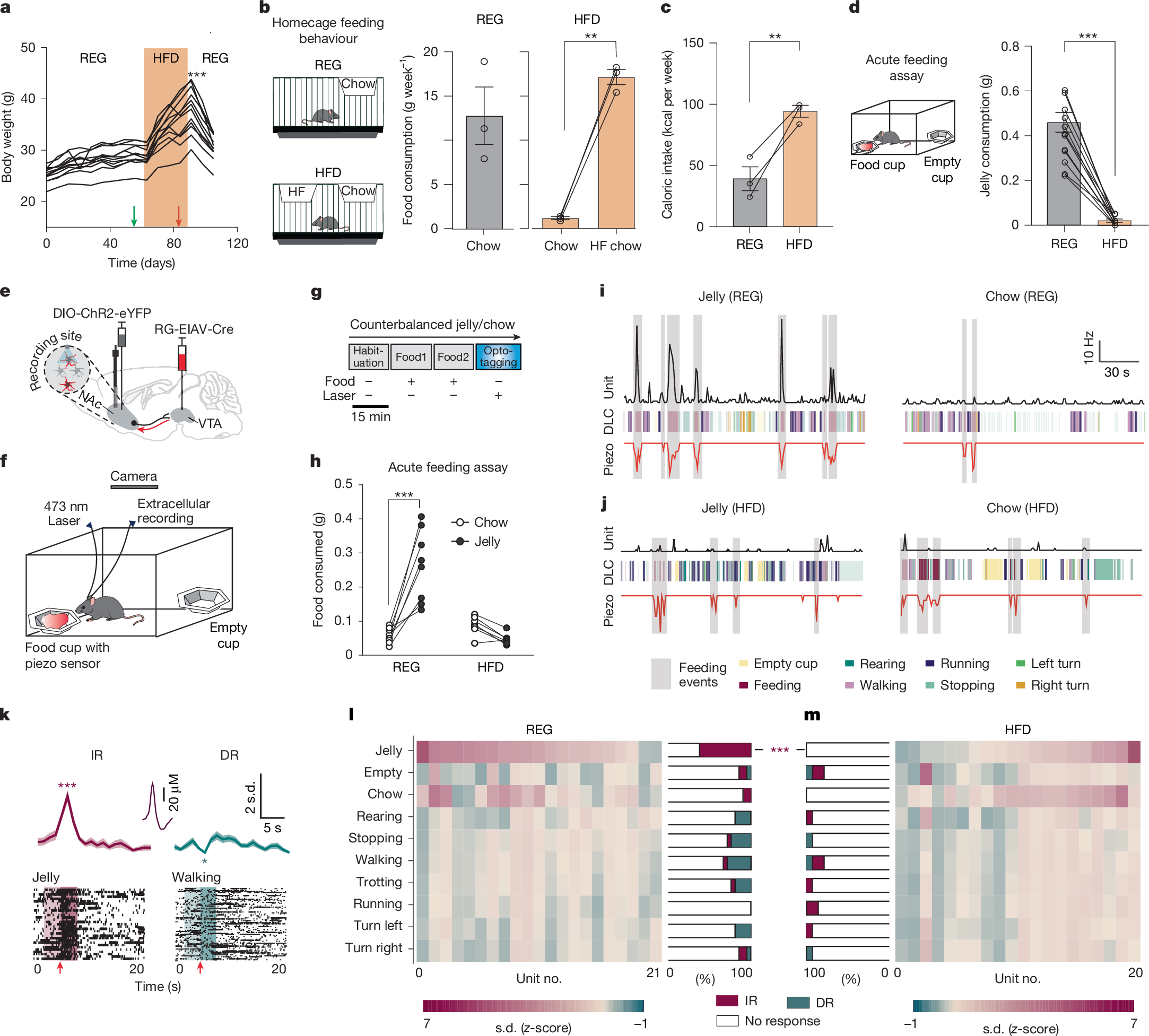2025-03-26 カリフォルニア大学バークレー校 (UCB)
<関連情報>
- https://news.berkeley.edu/2025/03/26/scientists-discover-why-obesity-takes-away-the-pleasure-of-eating/
- https://www.nature.com/articles/s41586-025-08748-y
ニューロテンシン信号の変化が肥満における快楽減退を引き起こす Changes in neurotensin signalling drive hedonic devaluation in obesity
Neta Gazit Shimoni,Amanda J. Tose,Charlotte Seng,Yihan Jin,Tamás Lukacsovich,Hongbin Yang,Jeroen P. H. Verharen,Christine Liu,Michael Tanios,Eric Hu,Jonathan Read,Lilly W. Tang,Byung Kook Lim,Lin Tian,Csaba Földy & Stephan Lammel
Nature Published:26 March 2025
DOI:https://doi.org/10.1038/s41586-025-08748-y

Abstract
Calorie-rich foods, particularly those that are high in fat and sugar, evoke pleasure in both humans and animals. However, prolonged consumption of such foods may reduce their hedonic value, potentially contributing to obesity. Here we investigated this phenomenon in mice on a chronic high-fat diet (HFD). Although these mice preferred high-fat food over regular chow in their home cages, they showed reduced interest in calorie-rich foods in a no-effort setting. This paradoxical decrease in hedonic feeding has been reported previously, but its neurobiological basis remains unclear. We found that in mice on regular diet, neurons in the lateral nucleus accumbens (NAcLat) projecting to the ventral tegmental area (VTA) encoded hedonic feeding behaviours. In HFD mice, this behaviour was reduced and uncoupled from neural activity. Optogenetic stimulation of the NAcLat→VTA pathway increased hedonic feeding in mice on regular diet but not in HFD mice, though this behaviour was restored when HFD mice returned to a regular diet. HFD mice exhibited reduced neurotensin expression and release in the NAcLat→VTA pathway. Furthermore, neurotensin knockout in the NAcLat and neurotensin receptor blockade in the VTA each abolished optogenetically induced hedonic feeding behaviour. Enhancing neurotensin signalling via overexpression normalized aspects of diet-induced obesity, including weight gain and hedonic feeding. Together, our findings identify a neural circuit mechanism that links the devaluation of hedonic foods with obesity.


